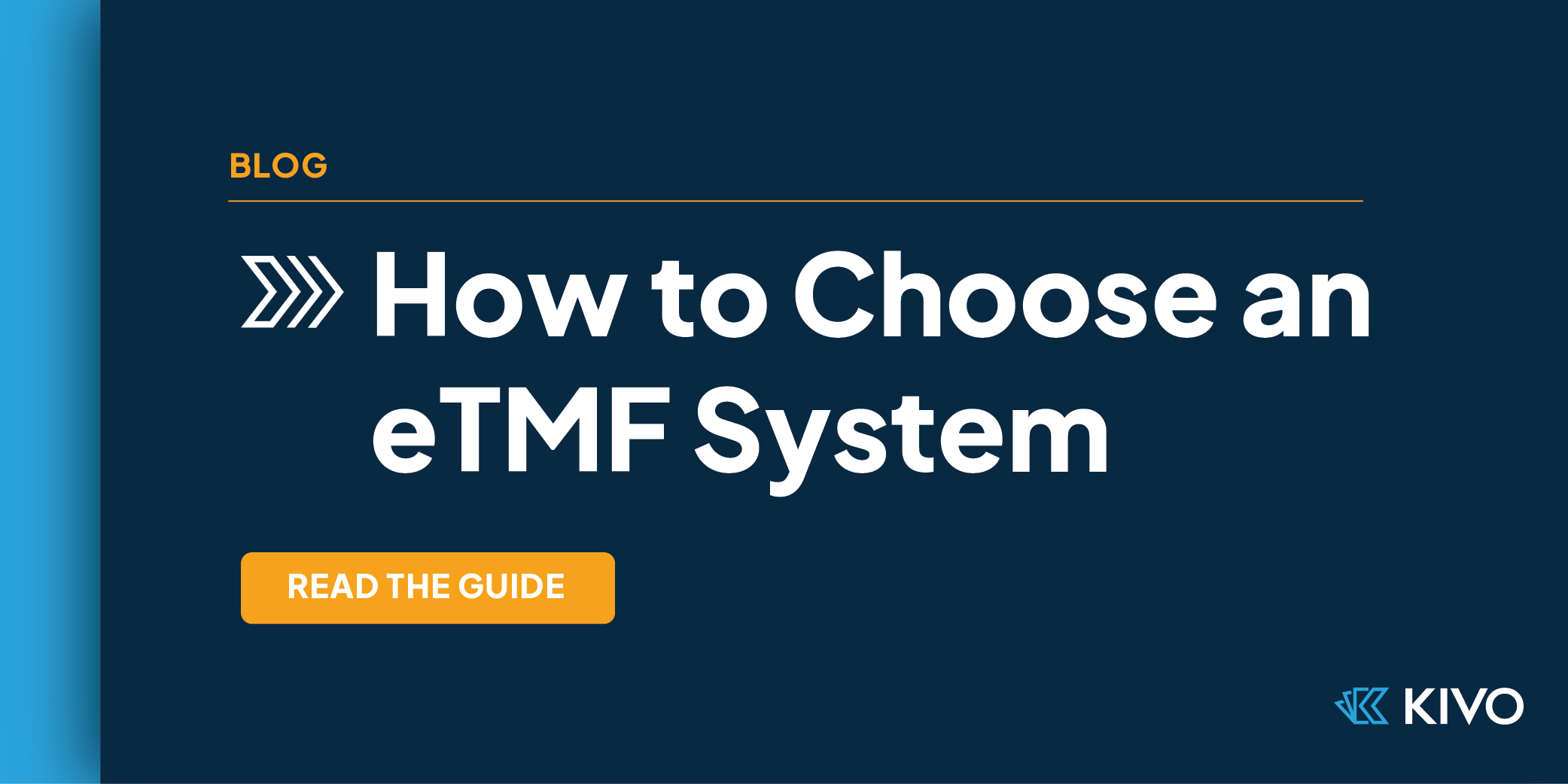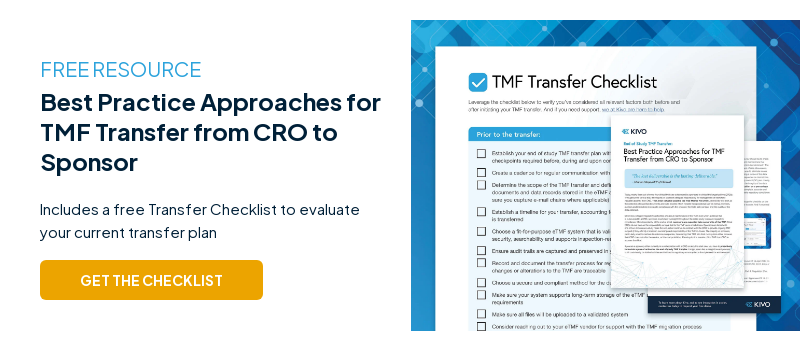With numerous eTMF software options available in the market, selecting the right system for your organization can be a daunting task. In this article, we will walk you through the key considerations and features to look for when choosing an eTMF system.
What is an eTMF System?
An eTMF system is a digital solution designed to facilitate the creation, organization, storage, and management of the Trial Master File, which comprises all essential documents related to a clinical trial. It serves as a centralized repository that enables efficient document exchange, collaboration, version control, and audit trail capabilities. eTMF systems offer various features and functionalities to support trial sponsors, CROs, and other stakeholders in maintaining compliance with regulatory requirements, ensuring data integrity, and facilitating inspection readiness.
What is the difference between eTMF and CTMS?
While both eTMF and CTMS are integral components of clinical trial management, they serve distinct purposes. The eTMF focuses specifically on document management and regulatory compliance, housing essential trial-related documents in a structured and organized manner. On the other hand, CTMS (Clinical Trial Management System) encompasses a broader scope, including operational and administrative functionalities such as site selection, patient recruitment, monitoring visits, and financial management. While there may be some overlap in functionality, it's important to recognize that eTMF and CTMS serve different purposes within the clinical trial ecosystem.
Do sponsors really need their own eTMF?
There are circumstances in which bringing TMF management in-house may be advantageous for an organization. While outsourcing TMF management to a CRO or a specialized vendor may offer convenience, there are potential benefits to consider by internalizing this function. Factors such as the volume and complexity of trials, the need for greater control over data management and security, and the desire for consistent processes and oversight across studies can drive the decision to bring TMF management in-house. By doing so, sponsors can establish standardized procedures, ensure compliance with internal policies, and have direct control over their trial documentation.
If and when you're ready to move your TMF, you'll want to make sure you have a clear plan for migration. Learn more about TMF transfers via our whitepaper below.
Features to Look for in an eTMF
When selecting an eTMF system, several key features should be considered:
- Document Management: The system should offer comprehensive capabilities for document organization, version control, metadata management, and efficient search functionalities. The ability to capture and store diverse document types, such as PDFs, Word documents, and scanned images, is crucial.
- Collaboration and Workflow: Look for features that facilitate efficient collaboration between stakeholders, allowing real-time document sharing, commenting, and task assignments. Workflow management capabilities should enable the tracking and monitoring of document review and approval processes.
- Compliance and Audit Trail: The eTMF system should provide robust audit trail functionalities, ensuring that all actions, modifications, and access to documents are logged and traceable. Compliance with regulatory guidelines, such as 21 CFR Part 11, should be supported.
- Integration Capabilities: Consider the system's ability to integrate with other existing clinical trial software, such as CTMS or electronic data capture (EDC) systems, to streamline data exchange and enhance overall trial management efficiency.
- Security and Data Privacy: Look for robust security measures, including user access controls, encryption, and data backup protocols. Compliance with data privacy regulations, such as GDPR, is essential.
- User-Friendly Interface: Very simply, can you find stuff?! The system should have an intuitive and user-friendly interface, allowing easy navigation, document retrieval, and efficient data entry. Training and support resources should be available to assist users in maximizing the system's potential.
What is the best eTMF system?
Generally speaking, the "best" eTMF system is the one that is best suited to your goals, workflows, and resources. You don't want to purchase a system that has far more functionality that you actually need, as that will make it harder to learn and use. You also need to consider the vendor as well as the software. You want to find a vendor that feels like a partner - who understands what you are trying to achieve, how you work, and can help you build the roadmap to get there.
Questions to ask an eTMF vendor
Whichever systems you consider, vet them thoroughly! Here are several questions you should be sure to ask before signing on the dotted line.
Do you offer a trial period?
Always try before you buy! You want to be sure the software offers the functionality you need. Not to mention, the trial period gives you the opportunity to see what it's like working with their support team.
What will it cost all-in?
eTMF software can be expensive! Be careful to probe around the full cost structure. For example, do they charge per study? Do they charge based on number of sites? GB of data stored? What fees do they include? Is there a platform fee? Validation fee? Implementation fee? Will the cost increase after the first year? Is there a cancellation fee if you choose to leave?
How do I get support?
Don't just ask about this - test it! Do you get responses back quickly to your questions? How robust is their knowledge base? Is it easy to reach a real person? When study deadlines are approaching, you want to be sure you have help available. And going back to the question of cost - is there a support charge?
What is your update process?
It's important that all system updates are fully validated and fully secure. Ask questions about the documentation that is provided with each update, how often updates occur, and what their history of downtime is.
What security features do you offer?
Security is paramount! Loop in your head of IT to ensure that your vendor offers the level of security required to store your data. You'll want to make sure the system is validated, that they allow Single Sign On, that they are Part 11 compliant, etc.
Conclusion
Selecting the right eTMF system is a critical decision that can significantly impact the efficiency and compliance of clinical trial operations. By understanding the features to look for in an eTMF system, distinguishing it from CTMS, and considering the circumstances that warrant bringing TMF management in-house, sponsors can make informed choices. Remember, thorough evaluation and alignment with regulatory guidelines and internal requirements are key to selecting an eTMF system that optimizes trial documentation management and streamlines compliance efforts.



